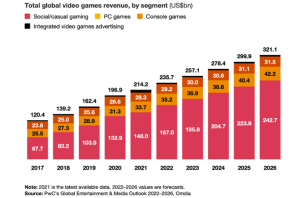
Gamification, the integration of game mechanics and elements into non-gaming contexts, has gained significant traction in recent years. This article explores the influence of gamification in non-gaming applications and the various ways it enhances user engagement, motivation, and overall experience.
Enhancing User Engagement
Gamification techniques capture users’ attention, encourage participation, and increase engagement levels. Incorporating elements such as points, leaderboards, and badges in non-gaming applications makes mundane tasks more interactive and enjoyable. Users are more likely to remain engaged, resulting in longer usage periods and increased satisfaction.
Boosting Motivation and Productivity
Gamification can provide a sense of accomplishment and motivation, driving users to complete tasks and achieve goals. By incorporating progress bars, levels, and rewards, non-gaming applications incentivize users to stay on track and continue their journey towards success. This heightened motivation among users often leads to increased productivity.
Improving Learning and Knowledge Retention
Traditional learning methods can sometimes be monotonous and ineffective. However, by integrating gamification into educational apps and platforms, learning becomes more interactive and engaging. Progress-based rewards, quizzes, and challenges within non-gaming applications not only make the learning process enjoyable but also improve knowledge retention as users are motivated to unlock additional content.
Building Social Connections
Gamification fosters a sense of community, allowing users to connect and compete with others. Non-gaming applications with social features like leaderboards and multiplayer challenges encourage users to interact with peers, comparing achievements and fostering healthy competition. This social aspect not only enhances user experience but also increases user retention and loyalty.
Applying Gamification in Business and Marketing
Gamification is not only limited to educational or productivity-focused applications. It has also found extensive applications in business and marketing strategies. By incorporating gamified features like loyalty programs, challenges, and rewards, companies can enhance customer engagement, build brand loyalty, and drive sales. Gamification provides a unique way to attract and retain customers by turning routine tasks into enjoyable experiences.
Conclusion
The influence of gamification in non-gaming applications cannot be overstated. By infusing game mechanics and elements into various contexts, user engagement, motivation, and overall experience are significantly enhanced. From educational apps to productivity tools and even marketing campaigns, gamification has proven to be a powerful tool in capturing user interest and achieving desired outcomes.


